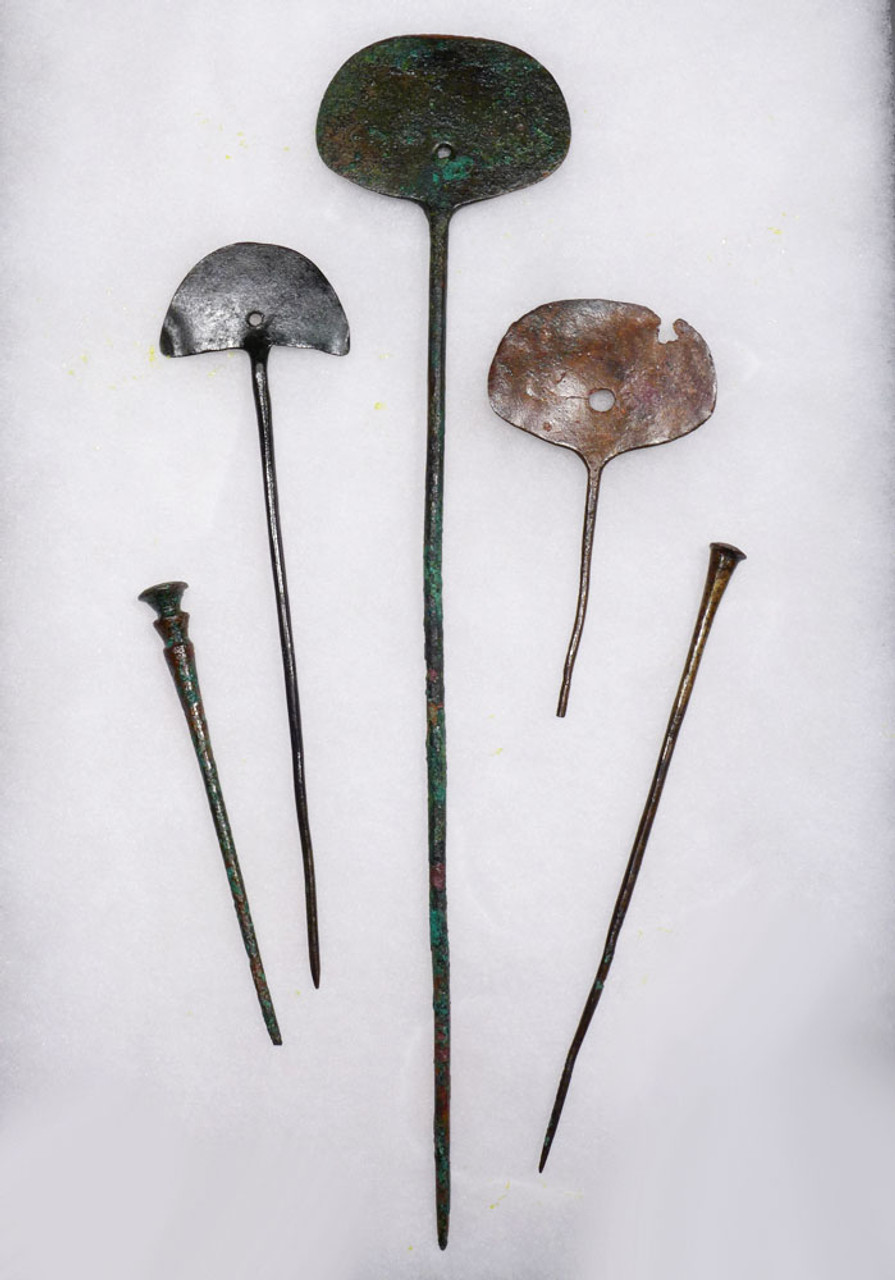Product Description
Included in this set of FIVE complete copper pins from the Inca Empire of Pre-Columbian South America are three large tupu pins and two stick pins. The tupu clothing pins are complete as our the long stick hair pins. These objects were important and fundamental items of everyday life for ancient Incan women.
The main item of Inca clothing worn by women was a long dress known as an anaku (regional difference in style existed, with the aksu, a longer version of the male unku, being common). The anaku reached to the wearer's ankles and was held around the waist by a broad belt or sash called a chumpi. A type of shawl or mantle, known as a lliclla, was worn over the shoulders.
The mantle was fastened with tupu pins made of copper, bronze, silver, or gold. The mantle was used as a carrying device during the Inca farming process and other daily tasks. As was the case throughout the empire, the materials used in the fabrication of all these items depended upon the rank of the wearer.
SEE MORE PRE-COLUMBIAN ARTIFACTS
HISTORY
Starting in the beginning of the 13th century A.D. until their final defeat to the Spanish in 1572, the Inca Empire grew to become the largest empire in Pre-Columbian America. Their peak was between the years 1438 and 1533 where they ruled an area as large as the historical empires of Eurasia. Their territory included Peru, southwest Ecuador, western and south central Bolivia, northwest Argentina, the majority of modern Chile, and southwest Colombia, controlled from their center in the city of Cusco in southeastern Peru.
A number of religious cults existed in the empire with regional beliefs but the Incan leadership practiced the worship of their main sun god, INTI. The Incas considered their king, the Sapa Inca, to be the "son of the sun.".
Despite the Incas building one of the largest imperial states in human history, they lacked many basic inventions. They had no wheeled vehicles, did not use animals for transportation or pulling plows, had no knowledge of iron or steel, and used no form of writing. The Inca Empire functioned largely without money or markets, instead using the barter system for the exchange of goods and services. In light of this, they were far from being a primitive society. The Incas built monumental stone architecture that to this day, still defies explanation. They also developed an extensive system of roads and highways reaching all ends of the empire. Their achievements in finely-woven textiles are legendary, and they developed innovations in farming and architecture in the extreme terrain of the Andes where most civilizations would have never dared occupy.
 US DOLLAR
US DOLLAR
 EURO
EURO
 AUSTRALIAN DOLLAR
AUSTRALIAN DOLLAR
 CANADIAN DOLLAR
CANADIAN DOLLAR
 POUND STERLING
POUND STERLING








